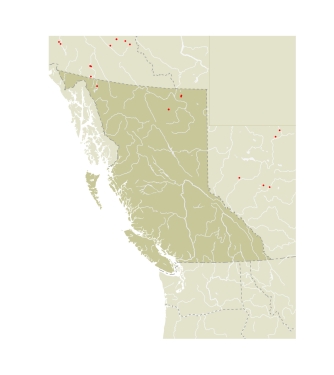AdultThe dorsal wings of the Cranberry Blue male are a dark violet blue. The female upperside ground colour is brown, with a strong overlay of blue scales that can mask the brown. In this case, the submarginal area is a washed-out blue. The underside of the wings of both sexes is grey with the typical black spots. There is one orange spot in the submargin of the hindwing.
Immature StagesUndescribed for North America. Henriksen and Kreutzer (1982) described the species in Scandinavia. The egg is white. The mature larva is green with a darker green dorsal stripe. There are pale yellow, violet-bordered lateral lines, and the body is covered with short, reddish hairs. The pupa is pale green with reddish hairs.
SubspeciesBC populations are the eastern Beringian subspecies, V.o. yukona (Holland, 1900) (TL: between Mission and Forty-mile Creeks, AK).
